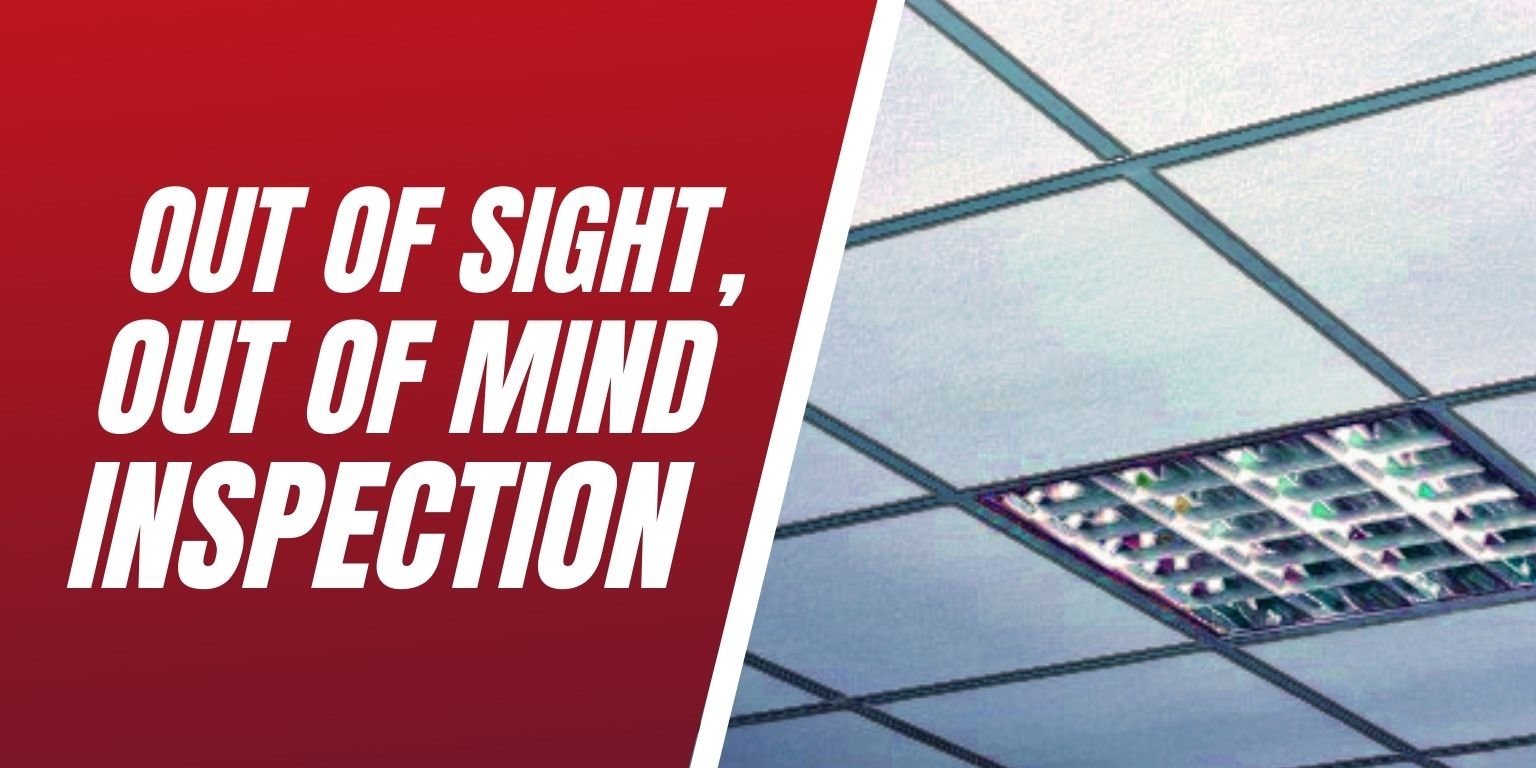
Of all fire safety procedures and inspections that are required by the Authority Holding Jurisdiction, above ceiling inspections is more than likely the last to be remembered as it is out of the facility manager’s sight during day-to-day operations. It’s easy to maintain the fire safety features that you see and interact with on a day-to-day basis and push the hidden portions to the side. Even though the area above the ceiling is hidden, doesn’t mean it lacks significance to the integrity of the passive fire protection system.
Above ceiling inspections are critical and significant to the overall report that the AHJ will require from you. These inspections examine wiring, junction box covers and wall penetrations. Facilities frequently under go maintenance, renovations and construction that could cause shifting or misplacement of the items that lie above the ceiling. Leaving the area messy with mechanical work misplaced could cause a major issue that a facility manager wouldn’t know is present without an inspection performed by an industry professional.
Defective Wiring
Faulty wiring is one of the main causes of fires starters within commercial facilities. Wires can be hazardous regardless whether they are located above or below the ceiling. Live electrical wires generate heat and when other wires meet each other this creates a fire hazard as the heat being produced could results in sparks which can then break out into a blazing fire. Monitoring the areas above your ceiling regularly and keeping up with the mandatory inspection guidelines can heavily reduce the risk of a fire to start in an area that is out of plain sight.
Misplaced Junction Box Covers
A junction box houses all electrical connections that come in contact with one another. It protects the wires from weather as well as prevent people or other things from getting shocked and creating a fire hazard. Junction boxes actually act as the first line of defense if an electrical spark creates a fire as it contains it within that specific area preventing it from growing. If the covers of junction boxes are missing, the purpose of it acting as a line of defense is useless.
Open Wall Penetrations
Wall and ceiling penetrations create an easy access for fire and smoke if not properly sealed. Leaving holes unsealed places all building occupants at extreme risk in the event of a fire. Whether its huge holes or small crevices it is just enough room for fire and smoke to pass throughout the building creating a life-threatening fire emergency. Firestopping is critical when it comes to open penetrations as it ensures the fire and smoke will be contained in that area and not continue to spread.
Preventive Fire Safety
Unfortunately, there are some things out of our control but what we can control is ensuring that the above ceiling fire safety inspection is included within your facilities maintenance plan. Keeping a close eye on electrical wiring and replacing when necessary, confirming cover plates are installed on all junction boxes and double checking that all wall and ceiling penetrations are securely firestopped are just a few of the safety steps facility managers can take to keep your facility safe from a fire emergency.
Ready to take action and guarantee your facility is fully protected from fire hazards happening above your head? Our experienced technicians are familiar with the mandated building and fire codes. LSS Life Safety Services, Above Ceiling Inspections include:
- Survey above ceiling penetrations an perform minor firestop repairs
- Prepare a schedule of installation repairs for fire-rated barriers
- Install missing junction box covers
- Remove wires from sprinkler lines and hangers and use zip-ties to connect above ceiling
- A master digital report via our web-based inspection software, LSS Site Surveyor
Contact our team for more information or to schedule your fire safety inspection today!

